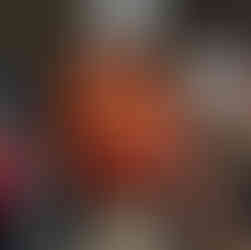Switzerland: Enjoying The Chocolate Culture of Zurich
- Ms. Mila Vasconcelos
- Feb 17
- 4 min read
The Sweetest Experience: Exploring Zurich’s Chocolate Culture & Bringing It Back to the Art Room
Cultural Experiences - By Ms. Mila Vasconcelos

I was so excited to start my summer vacation visiting the best place to eat chocolate on earth: Zurich, Switzerland. There, chocolate is an art, a science, and a cultural treasure that has been perfected over centuries. My visit to Switzerland wouldn’t have been complete without experiencing hands-on time with this sweet tradition.
My chocolate journey started at the Lindt Home of Chocolate, where I was greeted by a giant chocolate fountain and the irresistible aroma of freshly made truffles. Even when I was outside the building, the chocolate smell was spread in the air, on a very rainy afternoon in Zurich. It was a sensory overload in the best possible way. I learned about the meticulous craftsmanship behind Swiss chocolate-making, sampled every variety imaginable, and got to see the production process up close.
The tour began with an in-depth look at cacao production, where I learned how cacao beans are grown, harvested, and processed. The museum does a fantastic job of explaining the global journey of cacao, from the tropical regions of Ghana, Ecuador, and Madagascar to Switzerland’s world-class chocolate factories. Through interactive exhibits, I could see how cacao trees thrive in humid climates, how farmers carefully ferment and dry the beans, and how these beans are shipped across the world for production.
Moving further, I watched live demonstrations of the chocolate-making process. From the moment the beans are roasted, their aromas fill the air, setting the perfect scene to witness the art of grinding, conching, and tempering chocolate. The tour showcased high-tech machines that refine the chocolate to its signature smoothness, and I could see firsthand how cocoa butter is added to enhance its texture and flavor. The best part? Seeing the Lindt chocolatiers in action—carefully molding pralines, decorating truffles, and creating signature chocolate bars with precision and artistry.
Beyond the science and technique, the Lindt Chocolate Museum highlights Switzerland’s long-standing tradition of chocolate craftsmanship, showing how Swiss chocolatiers revolutionized the industry with innovations like milk chocolate and conching, the process that gives Swiss chocolate its velvety texture. The tour ends with a dream-like chocolate-tasting section, where I sampled everything from silky dark chocolate to melt-in-your-mouth milk varieties and delicate hazelnut pralines—each bite proving why Swiss chocolate is truly in a league of its own.
But my adventure didn’t stop there—because, of course, one chocolate experience wasn’t enough!
The next day, I went to Maestrani’s Chocolarium, a magical place where chocolate lovers get to become chocolatiers for a day. Over there, despite being a smaller and less-known brand around the world, I could create my own candy bar!
I selected my favorite ingredients, carefully poured the melted chocolate into a mold, and customized it with flavors that spoke to my personal taste (despite my new Philippine friend and filmmaker recommending an odd gummy bear on top!).
The experience of designing my own unique chocolate bar got me thinking—this would be an amazing creative project for my students back in the art room! And that was exactly what I did.
Back to the Art Room: What Do We Do?
Inspired by my experience in Zurich, I brought this chocolate culture immersion into the classroom—where art, design, and personal storytelling merged in a sweet and creative way. Here is how the lesson plan went:
1. The Chocolate & Cultural Connection
We started with a discussion about how chocolate is culturally significant around the world—Swiss milk chocolate, Mexican spiced cacao, and Belgian pralines. for example. I also shared a few special chocolates that I brought from different countries, so students could understand some differences and characteristics of each type and packaging.
Students reflected on their own home country’s flavors and traditional sweets, thinking about how cultural identity can be expressed through food and design.
2. Designing Our Own Chocolate Bar Packaging
Each student imagined their own signature candy bar, inspired by flavors and ingredients from their cultural background or personal preferences.
We explored packaging design techniques, focusing on:
Typography & branding: How does a package communicate flavor and identity?
Color psychology: What emotions do colors evoke in food branding?
Illustration & storytelling: How can the design reflect personal or cultural significance?
3. Creating a Unique Chocolate Recipe
Just like in Maestrani’s Chocolarium, students got to dream up their ideal chocolate bar flavors.
They developed ingredient combinations that represented their heritage, favorite flavors, or creative concepts—from tropical fruit-infused chocolates to spicy chili and nutty variations.
While we couldn’t physically make the bars, they wrote detailed "chocolatier notes" explaining why their flavor choices were meaningful.
4. Final Presentation & Reflection
Students showcased their candy bar designs alongside their chocolate concept descriptions, presenting their work as if they were pitching a product for a real gourmet chocolate company.
They reflected on how packaging design influences perception and how food can carry cultural narratives.
Why This Matters
This lesson helped students connect art, design, and personal storytelling. Through this experience, they learned how branding and visual identity shape the way we experience products, while also exploring how food reflects cultural heritage and personal expression.
From my own experience tasting, crafting, and learning in Zurich, to seeing my students bring their ideas to life in the art room, this project was a deliciously creative journey—one that proves that art, culture, and chocolate are the perfect combination, especially for a choco-lover like me!
Ms. Mila Vasconcelos



















































Comments